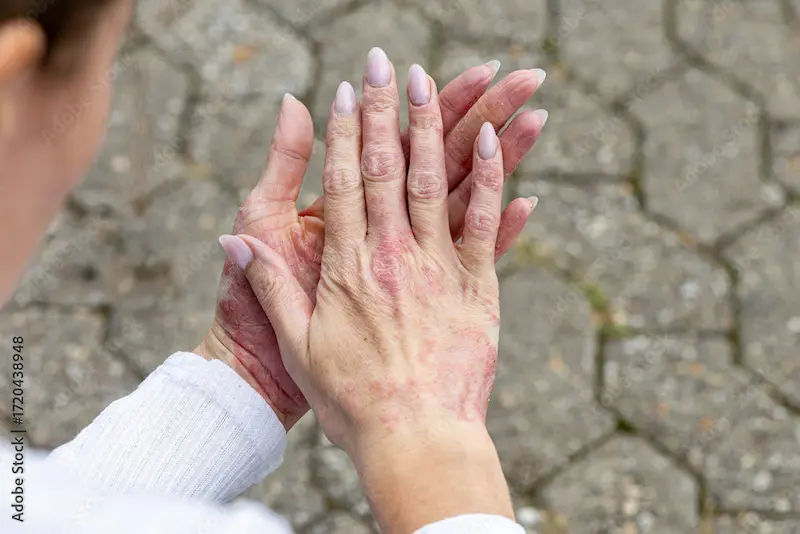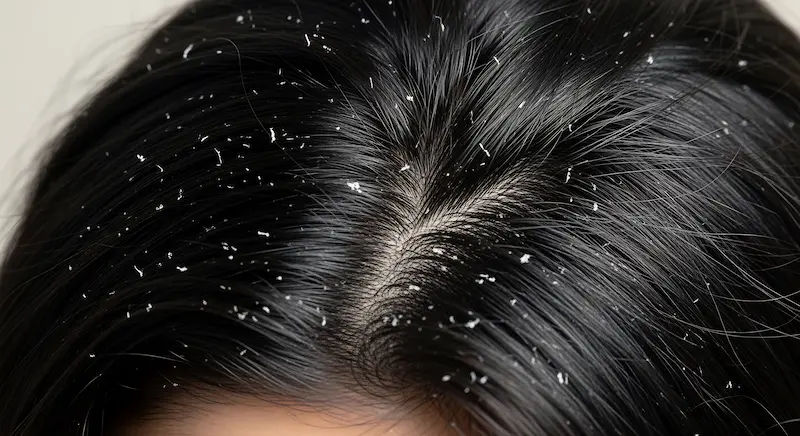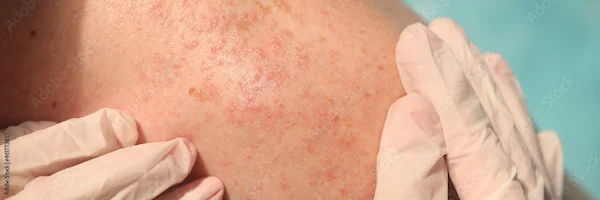- Female
- 21 Years
- 22/01/2025
I'm considering using an adapalene microsphere plus clindamycin phosphate gel that contains 0.1% adapalene and clindamycin phosphate equivalent to clindamycin 1%. I'm curious if it's a powerful retinol and exfoliant. Can I safely layer it with a mild AHA product, considering I have dry skin? If it's possible to layer without too much exfoliation, what AHA percentage would you suggest, and what type would be best?
Answered by 1 Apollo Doctors
Adapalene Microsphere Plus Clindamycin Phosphate Gel is indeed a powerful retinol and exfoliant, containing 0.1% adapalene and 1% clindamycin phosphate. Adapalene helps control excess sebum production, removes dead skin cells, and opens pores, while clindamycin kills bacteria that cause acne.
For dry skin, it's essential to be cautious when layering retinoids with alpha-hydroxy acids (AHAs). Start by applying a small amount of the gel and gradually increase as your skin becomes more tolerant.
If you still want to layer it with a mild AHA product, consider the following:
AHA Options
- Glycolic Acid (5-7%): A gentle, water-soluble AHA that helps brighten and exfoliate the skin.
- Lactic Acid (5-10%): A hydrating AHA that exfoliates and helps retain moisture.
Tips for Layering
- Apply the AHA product first, allowing it to absorb fully.
- Wait a few minutes before applying the Adapalene Microsphere Plus Clindamycin Phosphate Gel.
- Start with a low concentration of AHA and gradually increase as your skin becomes more tolerant.
Dr. Chandra Suggests...
Consult a Dermatologist
Answered 04/07/2025
0
0

More Dermatology Health Queries
View allI've recently had surgery for a pilonidal cyst about a month ago. Now I'm really concerned about it not coming back. I talked to my doctor and asked if I need to keep the hair off the area around my butt, but he said it's not necessary, just to keep it clean and dry after showers. I've been following his advice, but I'm still not completely sure because, honestly, I'm pretty hairy in that area. So, I'm wondering if getting laser hair removal could be a good idea to help prevent the cyst from recurring. What do you think?
To minimize the risk of pilonidal cyst recurrence, consider the following: *Treatment Options* 1. *Laser Hair Removal*: Reduces hair growth, which can help prevent pilonidal cyst recurrence. Ensure you consult your surgeon or dermatologist before undergoing this treatment. 2. *Waxing or Sugaring*: Alternative hair removal methods that can help reduce hair growth. 3. *Depilatory Creams*: Dissolve hair at the surface of the skin, making it easier to remove. *Advice* 1. *Maintain Good Hygiene*: Continue to keep the area clean and dry, as advised by your doctor. 2. *Avoid Tight Clothing*: Wear loose, breathable clothing to reduce friction and irritation. 3. *Monitor the Area*: Regularly inspect the area for any signs of recurrence, such as redness, swelling, or drainage. 4. *Follow-up Appointments*: Attend scheduled follow-up appointments with your surgeon or dermatologist to ensure the area is healing properly. *Precautions* 1. *Consult Your Surgeon or Dermatologist*: Before undergoing any hair removal treatment, consult your surgeon or dermatologist to ensure it's safe and suitable for your individual case. 2. *Avoid Sharing Personal Care Items*: Prevent the spread of bacteria by using personal care items exclusively.
Answered by 1 Apollo Doctors
I'm using Folliserum for my hair fall since I was 56, but I haven't noticed any improvement yet. I read somewhere that it might take up to 3-6 months to see results. Should I be more patient, or is it time to switch to a different serum? What do you suggest?
1. *Continue Follicserum usage* for at least 3-6 months. 2. *Consult a dermatologist* for personalized advice. 3. *Consider combination therapy* with minoxidil or biotin supplements. *Alternative Hair Growth Serums* 1. *Kerastase Densifique Serum* 2. *Nioxin 3-Part System* 3. *Regenepure Hair Growth Serum*
Answered by 1 Apollo Doctors
I'm dealing with this really itchy allergy on my neck and inside my elbows. It's been four days now. I've been taking polaramine for three days and using soframycin, like I usually do since I often have skin allergies. But this time, it doesn't seem to be getting better. I'm getting quite worried. Could there be something else I should try or maybe there's something I'm missing here? Would appreciate any advice you have.
This could be fungal infection u need to evaluate with your Dermatologist and get appropriate treatment with oral antifungal medications and topical lotions,once the infection is resolved your hair fall would come down,I suggest you not to use minoxidil with active fungal infection,above this your personal hygiene care is more important.
Answered by 1 Apollo Doctors
Disclaimer: Answers on Apollo 247 are not intended to replace your doctor advice. Always seek help of a professional doctor in case of an medical emergency or ailment.





